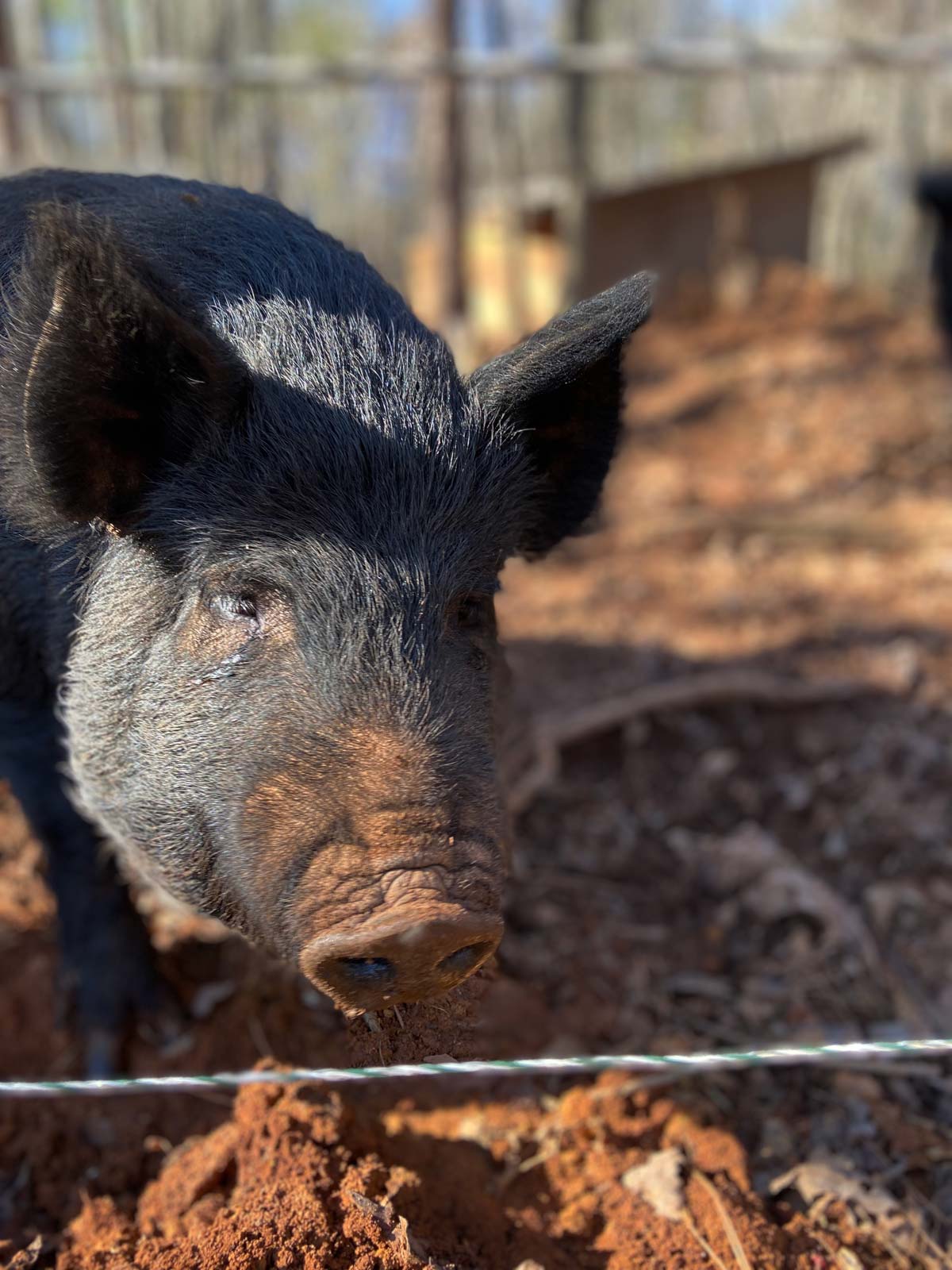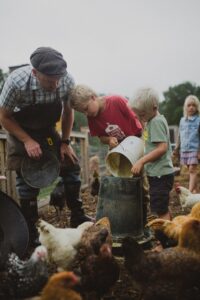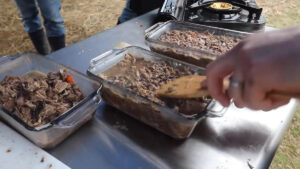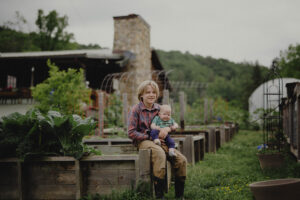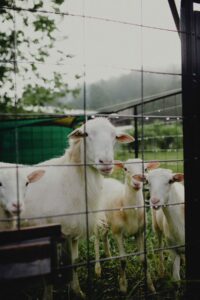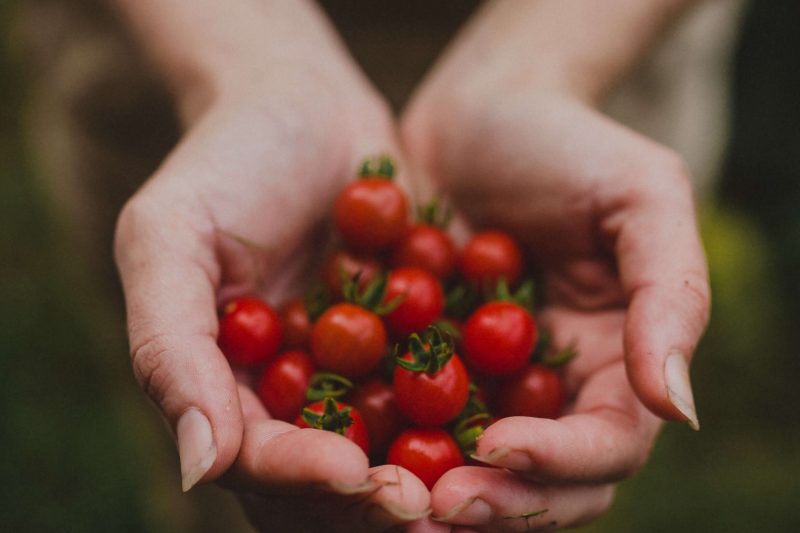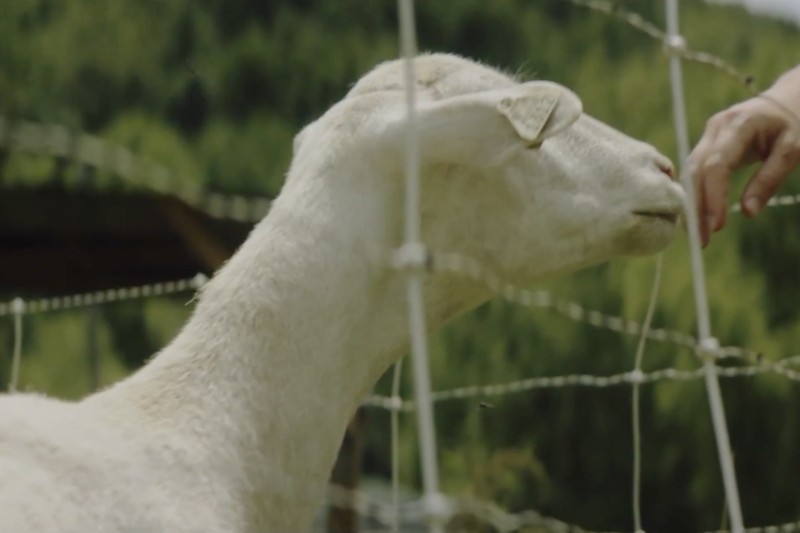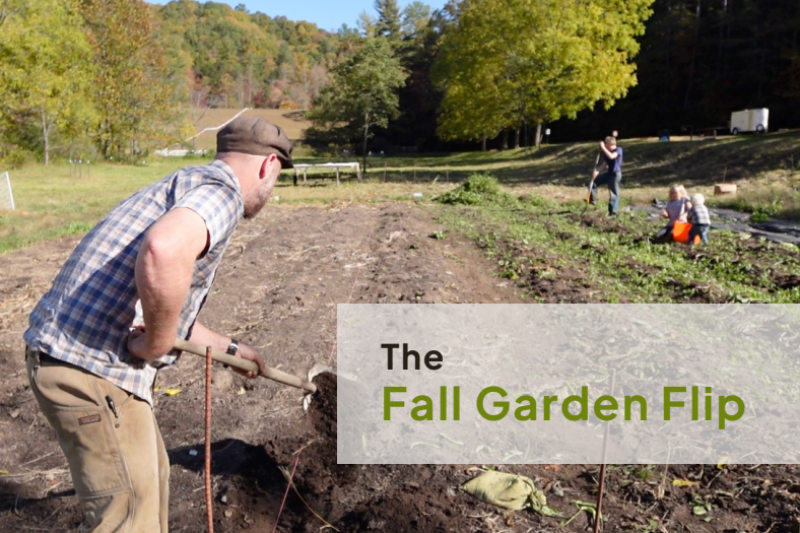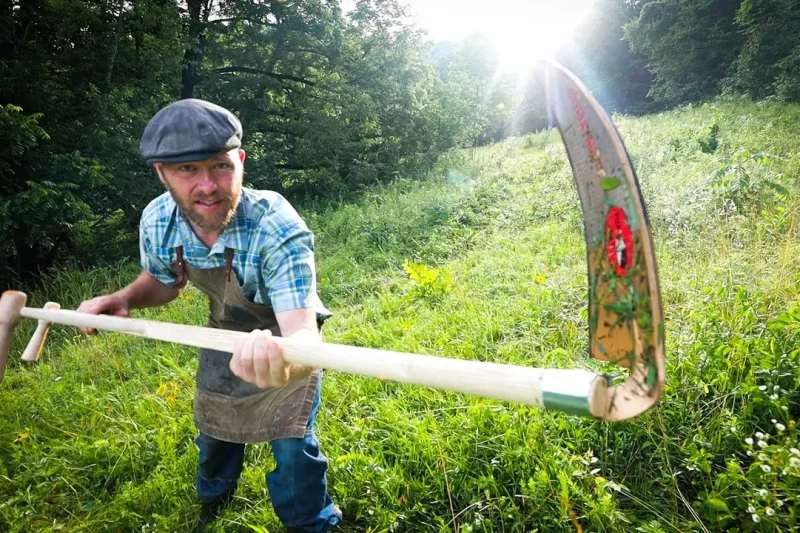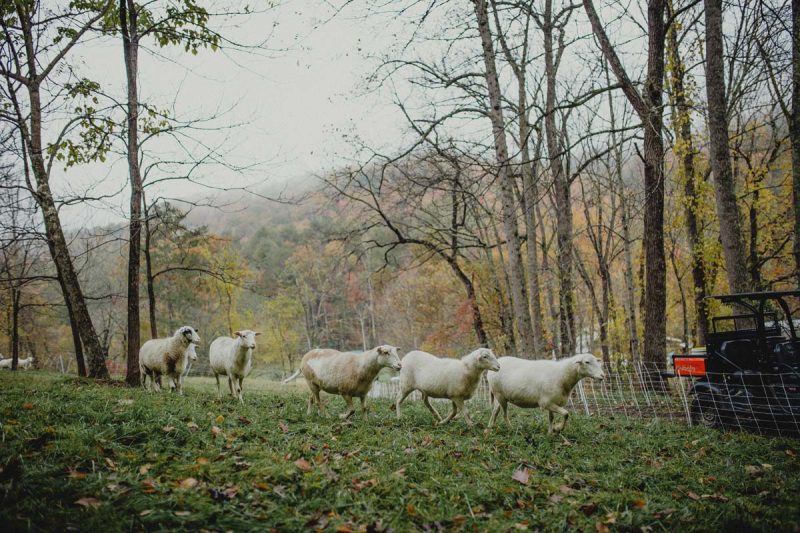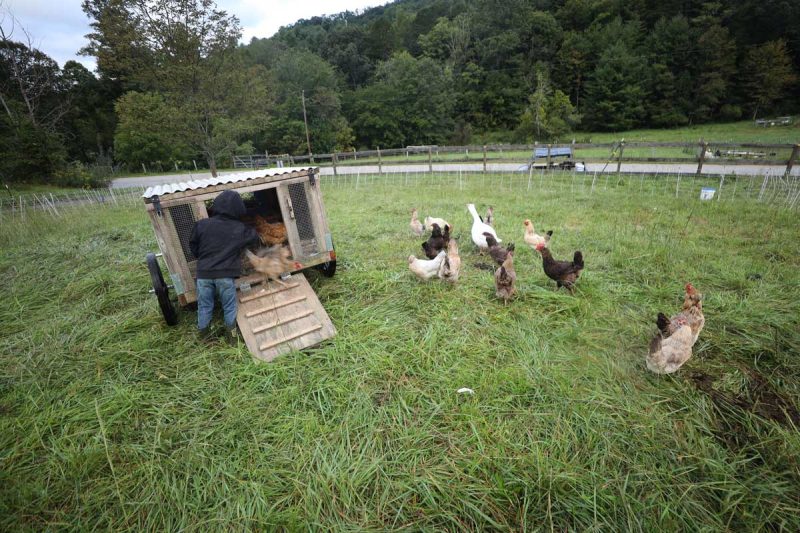Read on to learn about raising pigs for beginners, including feed cost, how much pasture you will need, and how long it takes to raise a pig before it’s time to butcher.
Abundance Plus
This post is written from a portion of my Permaculture Pigs Course as well as a 30-minute video on how to raise two pigs to feed your family for a year. These videos cover everything you need to know about breeding, raising, and butchering pigs using the permaculture approach.
For full access to the course and videos, you can sign up for a FREE seven-day trial of Abundance Plus. Anyone who signs up for A+ will also get exclusive discounts to Premier1, New Country Organics (where we get our organic alfalfa feed pellets), McMurray Hatchery, Johnny’s Selected Seeds, Meadow Creature and many more.

Why We Raise Pigs
Our homestead is a working permaculture homestead; everything has a purpose. There is something to be said about raising your pork. Pigs are a good food source that allows us to cure bacon at home and render lard ourselves, but they do so much more.
Pigs can cultivate unused land and also produce manure which can help fertilize our gardens.
Another great benefit of having pigs on our farm is that pigs love to eat almost anything. We can give them food scraps from the house, the extra dairy milk, weeds, and any plants you want to remove.
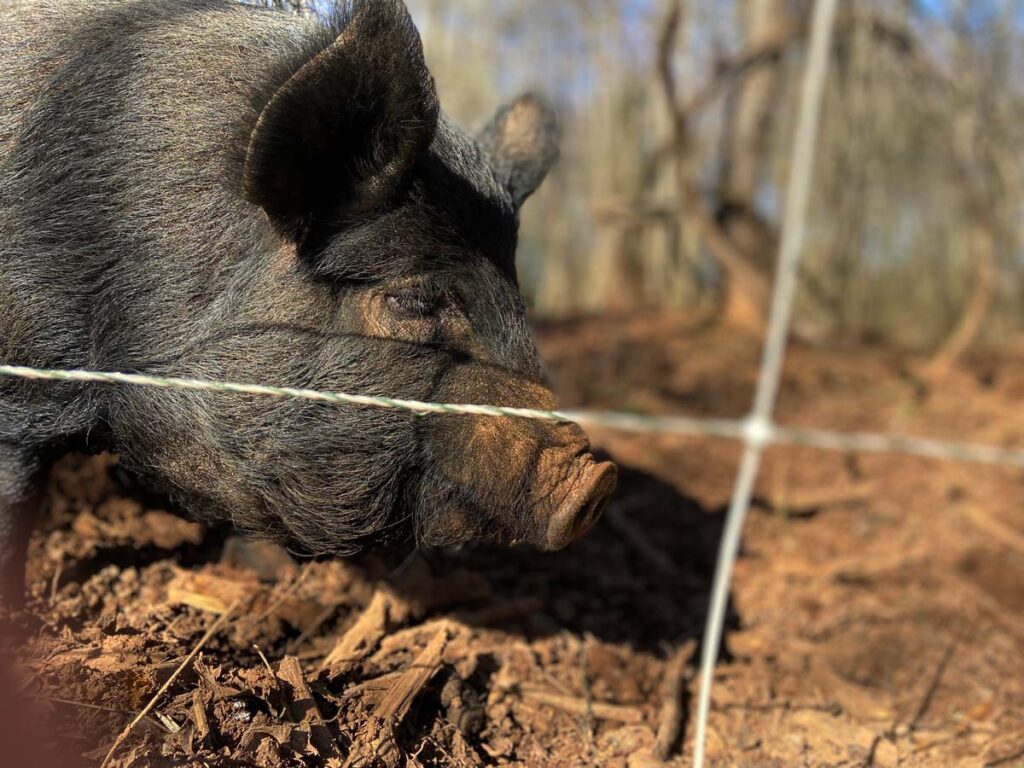
Heritage Breeds
I recommend researching heritage pig breeds and finding where to purchase your heritage breed at The Livestock Conservatory. One of our favorite heritage breeds to raise is the American Guinea Hog, but hands down my favorite are the Gloucestershire Old Spots.
We raise Old Spots for a few reasons. But both Old Spots and Guinea Hogs have strong genetics, which makes raising pigs on a homestead much easier. These genetics provide a multitude of desirable characteristics.
- Expert Forgers – They’ll root wherever you put them. They work well for permaculture farmers like us because we rotate animals and the pigs turn with them.
- Quality Meat – They’re are known for their tender meat and high-quality fat content.
- Docile – They are calm and gentle, which makes things easier.
- Low Farrowing Complications – If you are breeding your pigs, they prove to have fewer complications in farrowing.
- A Smaller Breed – If you are just starting to raise pigs, these breeds are on the smaller side of pigs. Being a small breed makes them great for a smaller farm.
- Easy To Train – They’re easy to train and very smart pigs.
But don’t let a heritage breed be what keeps you from raising pigs. If you have access to fast-growing pigs from good stock, go for it! Other fast-growing breeds are Red Wattle, Chester Whites, Duroc, Berkshire, Hampshire, Hereford, Tamworth, Mulefoot, Large Black, Spotted Pig, and Yorkshire.
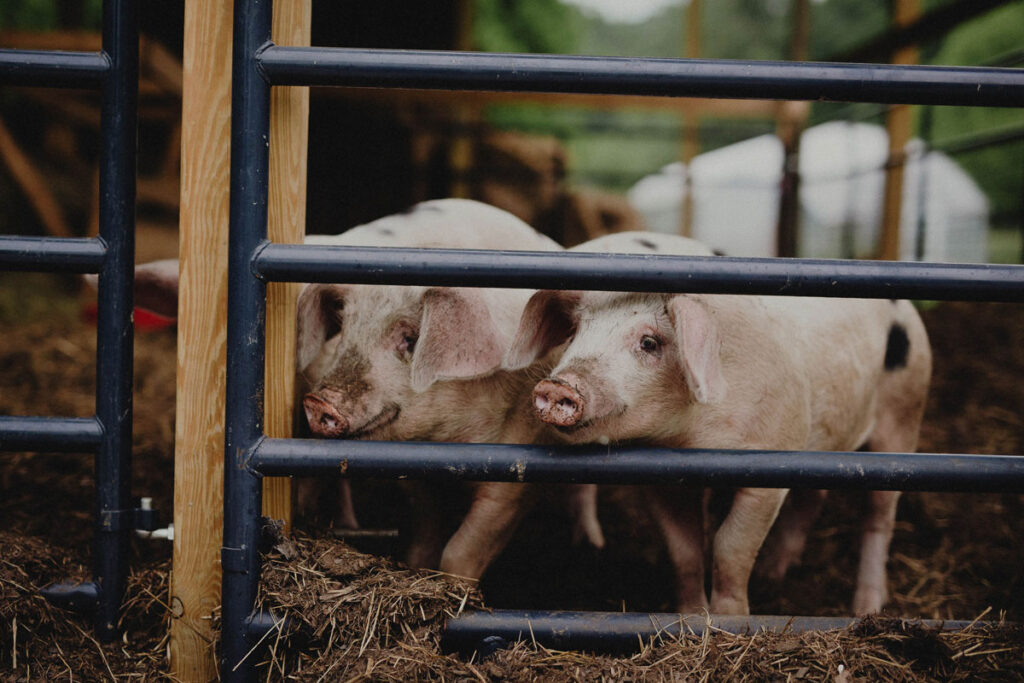
Is Raising Pigs for You
When considering raising pigs, you need to know if you have a suitable space for them. If you live within city limits, you must check the city ordinances to see if you can have pigs on your property.
You may have the space, but do you have the time? Pigs need food and time spent with them. Raising pigs is probably not for you if you don’t have extra time and space.
First-Time Raising Pigs
It is a good idea for beginner pig farmers to start with feeder pigs. You will want to purchase these pigs around two months old. A good time to get them is spring and raise them until fall or early winter.
We typically raise our pigs for four or five months, which prevents us from worrying about feeding and housing them through the winter.
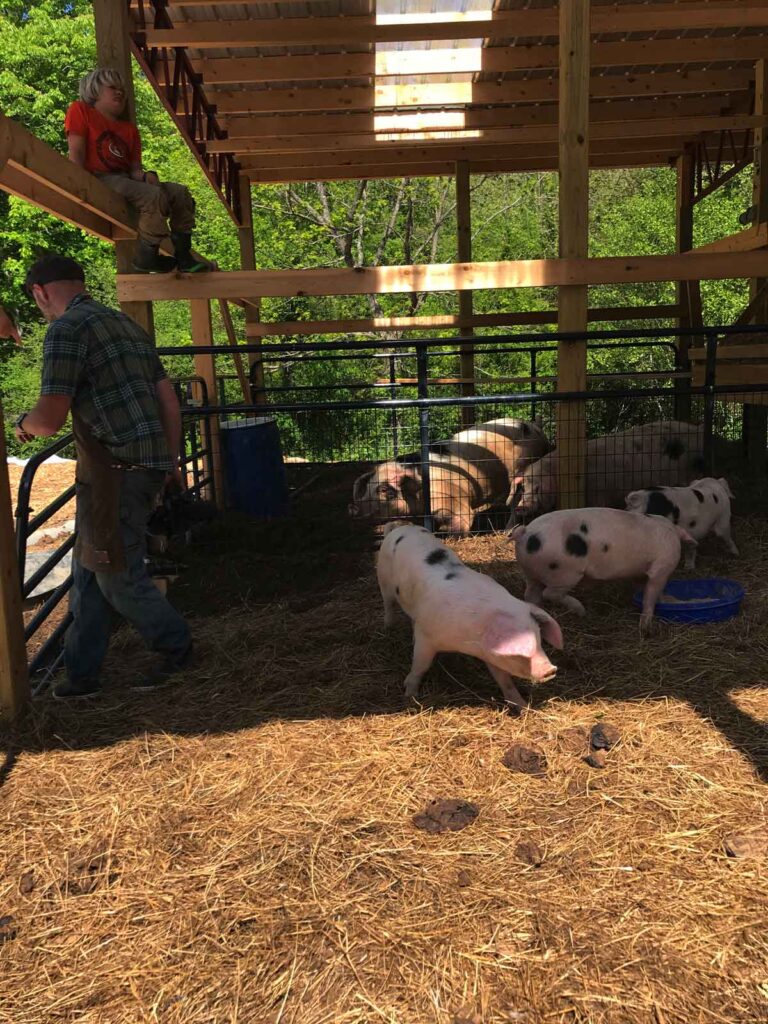
Supplies to Get Started
When raising pigs, you can use many different resources. Pig supplies do not have to be fancy or expensive. You can build your feeders, waterers and shelter with reused materials.
- Crate – A crate is needed to bring home your piglet, and allow you to transport it home without complications.
- Bedding – Pigs do not regulate their temperature easily, so it is important to keep them warm and dry. Your shelter should have about 8 inches of bedding. Pro-Tip: We use wood chips. They absorb moisture and are easy to clean out of the stall. You could use hay, but it can get soggy.
- Fencing – Pigs are escape artists. They need fencing to keep them in the area you want them in. We use electric wire fencing and netting, but you can also use hog panels with rebar to keep your pigs in place. (Read about how to set up electric fencing here.)
- Shelter – Pigs need a refuge out of the elements. You can use just about anything to create the shelter. Stalls, barns, moveable carports, and even scraps of wood nailed together work well. Pigs are not picky.
- Waterer – Pigs like clean water. We made our DIY pig waterer from a 55-gallon food-grade barrel. It makes watering your pigs way easier.
- Feeder – A feeder is a container that holds the pig feed, including grains, minerals and supplements.
- Feed – We use Reedy Fork Organic feed to feed a pig. It is a commercial pre-mix feed. For a beginner, a pre-mix feed is a lot easier than mixing your grains. We also provide our pigs with food scraps from the kitchen. Here is more information about what pigs eat in a day.
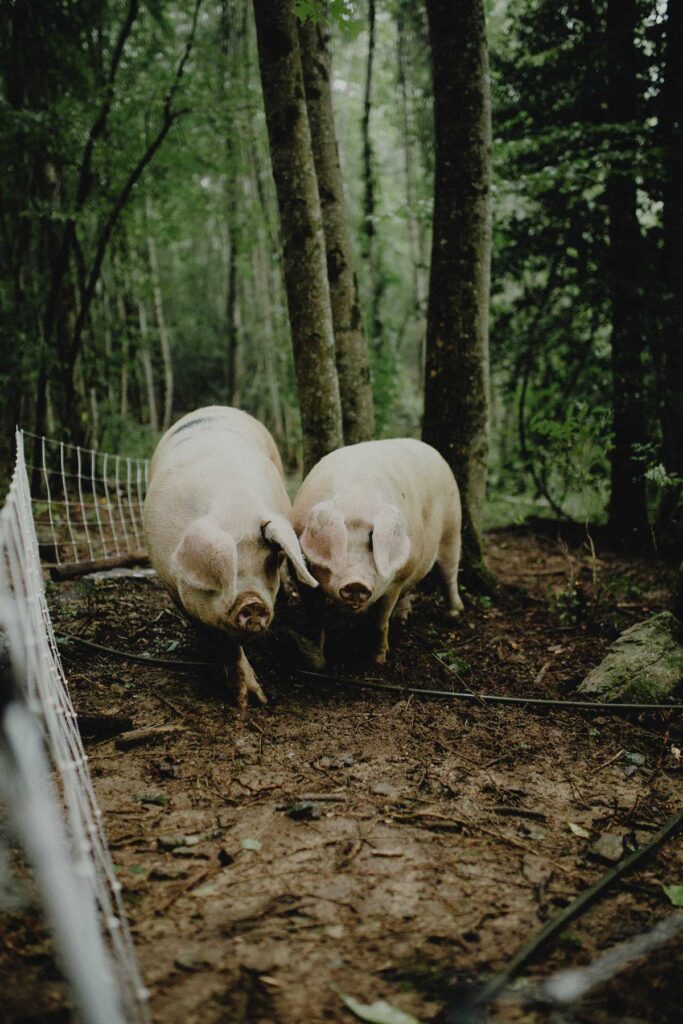
How Much Space Does a Pig Need?
Pigs do not need a lot of space to thrive. They will be happy if they can sleep, eat, and root. If you’re keeping them in a pen and not moving them, one pig will need an approximate 8×10 foot space (80 square feet). So if you get two pigs, you will need double that space.
One thing to consider is that the more room they have to roam, the less smelly they are. Permaculture farming allows pigs to have a much larger space to work and move around. We have found that the pigs are healthier and build more muscle, making quality meat.
Raising 2 or 3 pigs in a rotating pasture will require approximately ¼ of an acre. Not much space at all. We’ve been utilizing our pigs to clear the forest ground and add more useable space to our homestead.
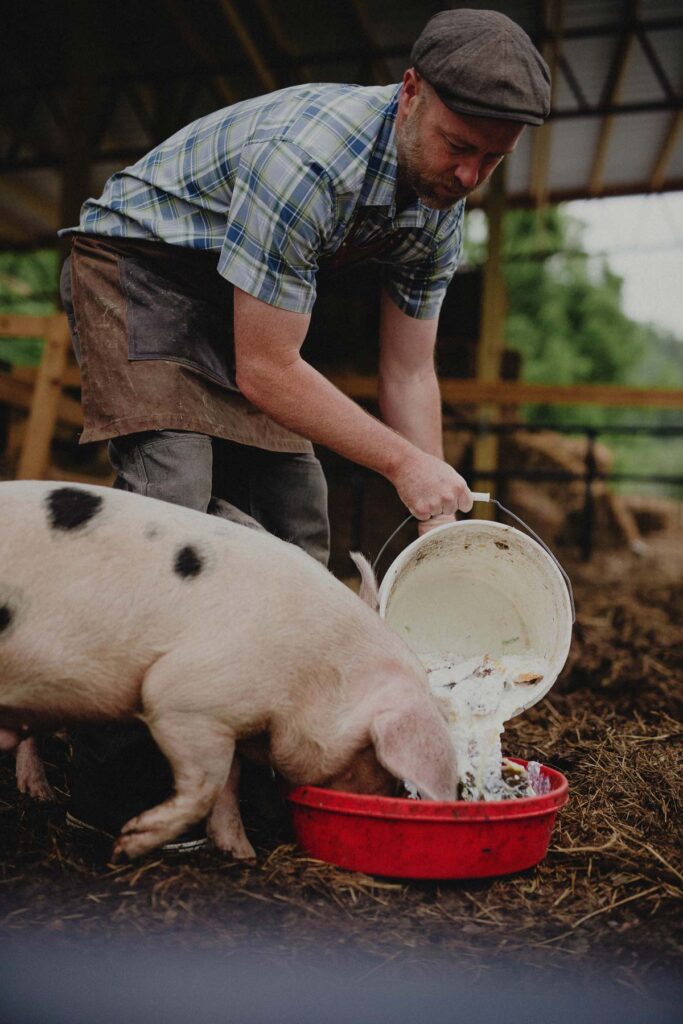
Cost of Raising Pigs
We raise organic pigs to have organic meat. It does cost more to go organic, but we believe it is well worth it.
You will have your upfront cost for fencing, shelter, feeders, and water, and it could cost from $0 to $5000, depending on the resources you have lying around your farm. However, these supplies are a one-time setup cost.
Another cost will be your pig. This cost will depend on the breed that you buy. Pigs are very social animals. We recommend purchasing at least two pigs.
Feed will be the most expensive cost annually. A general rule of thumb is to estimate how many months a pig will live and use that as the approximate number of pounds of food it will consume each day.
Depending on how many pigs you raise, buying a tote of feed might be cheaper. A tote is 1000-2000lbs of feed in a container. The savings could be over 25% if you use all the feed.
Butchering your pig will also be an additional cost if you are not doing it yourself. A butcher will charge around $60 to $150 to slaughter your pig. Then there is the processing fee. Expect to pay $0.40-$2 a pound.
Pig costs do add up, but the joy and gratification of raising a pig are well worth it!
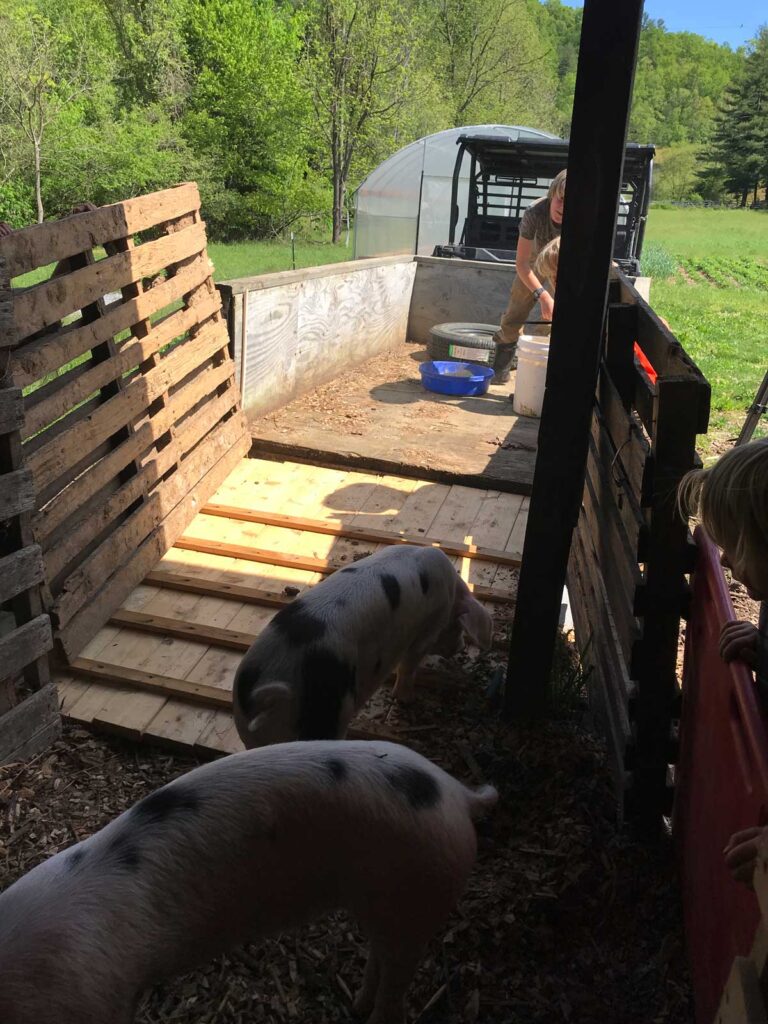
Purchasing Your Pig
Depending on where you purchase your young pig, you need to consider farm transportation. Some farmers will bring them to you, but you usually need to transport the pigs. At two months old, your pig will be ready to come home.
A large dog crate is the easiest and cleanest way of hauling your pig to the farm. Placing a Rubbermaid container inside the crate with 8 inches of wood shavings is also very helpful.
If you need to travel more than six hours, go ahead and stop half-way through and try to get your pigs to eat and drink. If they won’t, don’t worry about it, just know it’s because they’re stressed out.
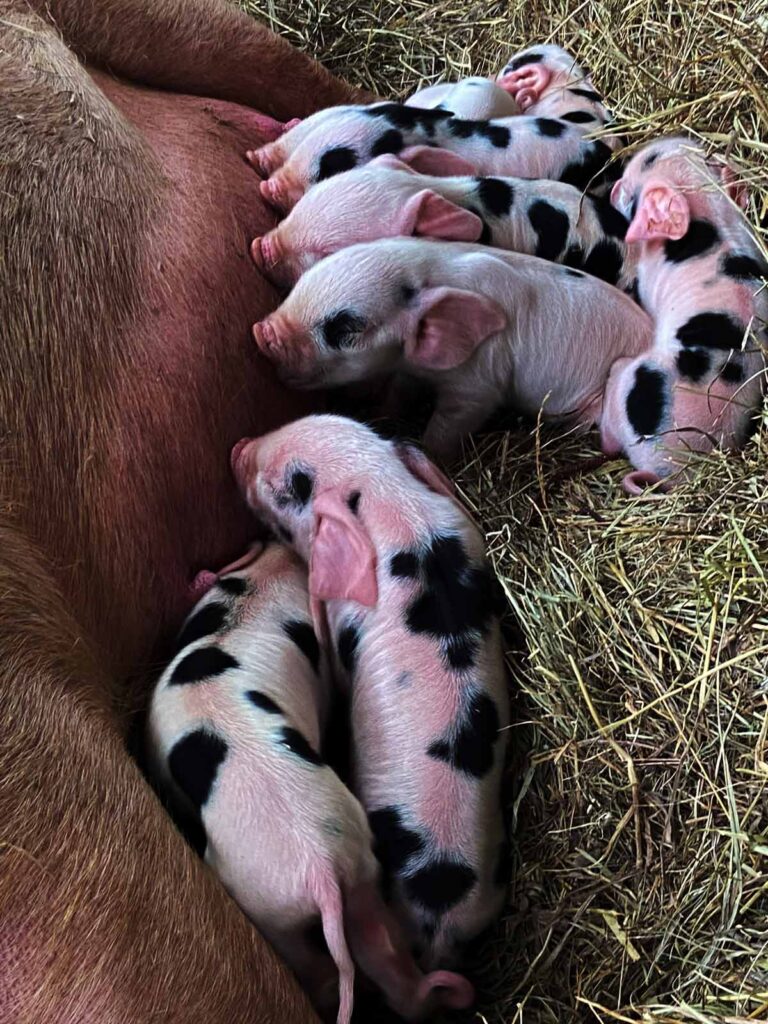
First Week of Raising Pigs
Once your pigs are home, you can put them in their holding area. This space can be their permanent place to live or a training ground. Make sure you put down 8 inches of bedding in this space. Using wood chips helps keep the area dry and warm.
The first week is an excellent time to ensure you have healthy pigs. You can add 6 cups of apple cider vinegar to a 55-gallon waterer to help your young pig’s gut health, and this can also help fight against parasites.
We use the holding area to train the pigs to come to us and to bucket feed them. Also, using a holding stall teaches them to use electric fencing.
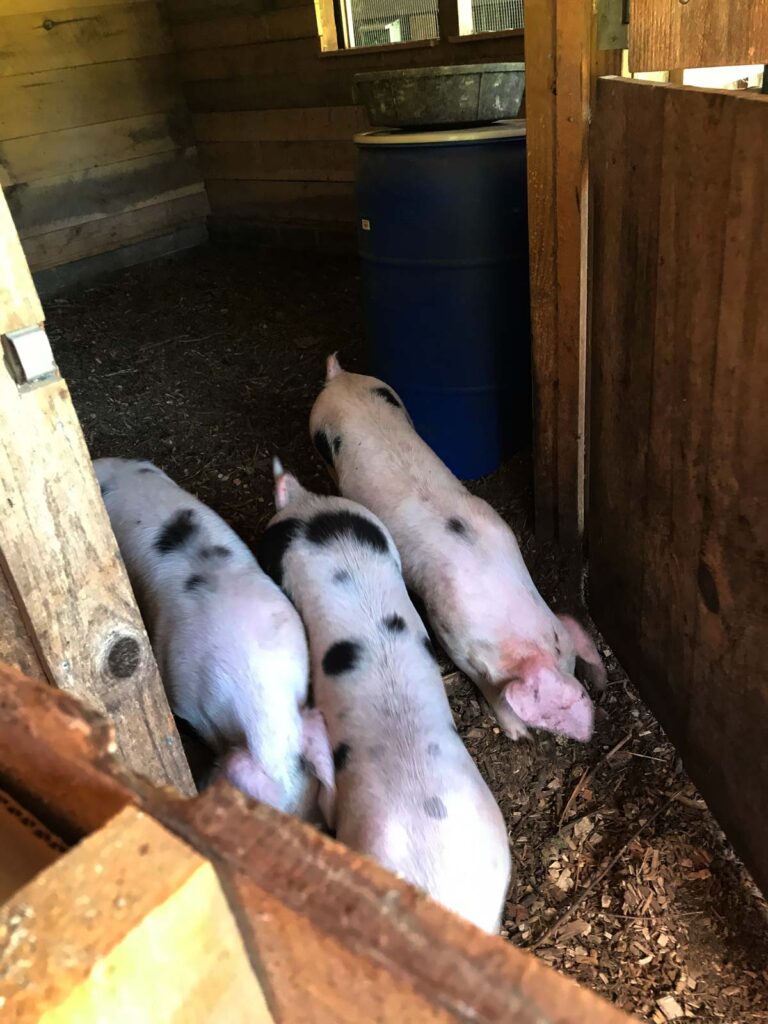
Castrating Pigs
If you end up with male pigs, you’ll want to be sure you learn how to castrate your pigs. There is something called boar taint, where when a male pig goes through puberty, it can change the flavor of the meat.
Not everyone picks up on this flavor change, but some say it gives the meat an undesirable taste. We castrate our pigs here on the farm. Like we always say, pigs have one bad day on our farm unless they’re males, then they have two!
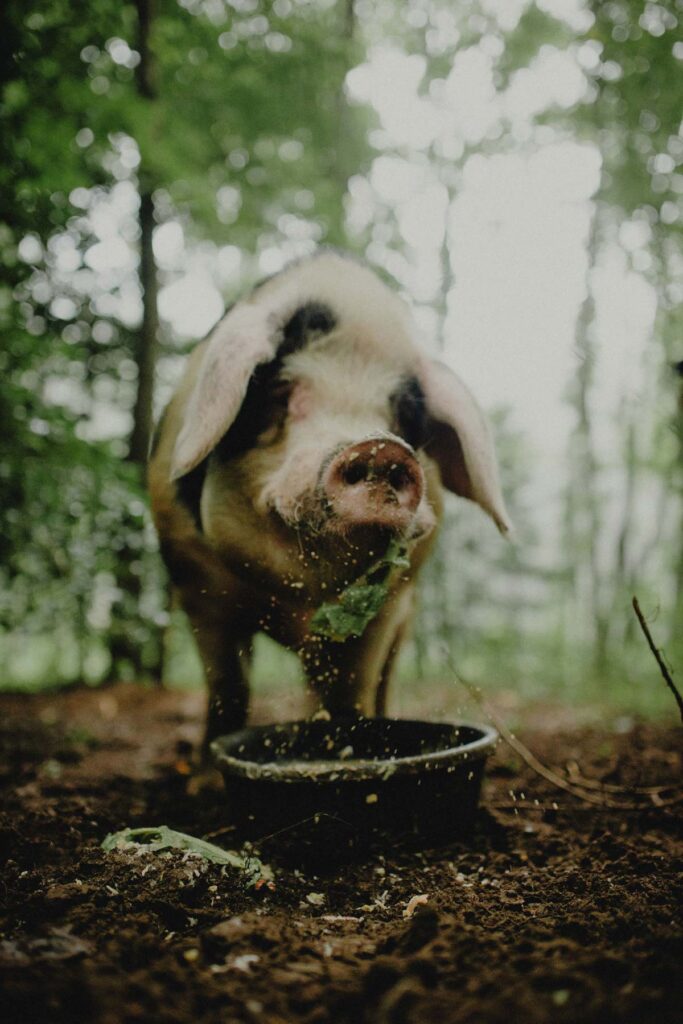
Putting Pigs to Work on the Farm
You may not have to train your pigs if you keep them in the pig pen and do not move them. After preparing your pigs with bucket feeding and electric fencing, move them to the pasture or forested area.
You should expect your pigs to gain about 1 to 2 pounds daily, depending on the breed and the type of feed they are eating.
There you have it! The first steps in becoming a pig farmer.
For even more information on butchering pigs, be sure to grab my free videos on how to kill and bleed out a pig and how to butcher a pig (3-part video series).
More Posts You May Enjoy
- Homemade Pork Rind Chips
- How to Make Head Cheese
- Birthing Piglets – What You Need to Know
- Cost to Raise Meat Chickens – Organically
- How to Raise Turkeys (Pasture Stage)
- Your Land Will Tell You How To Homestead
- How to Buy Homestead & What to Look For in a Homestead Property
- Homestead Planning the Right Way
- How to Train a Cow to Milk
- Raising Sheep Naturally
